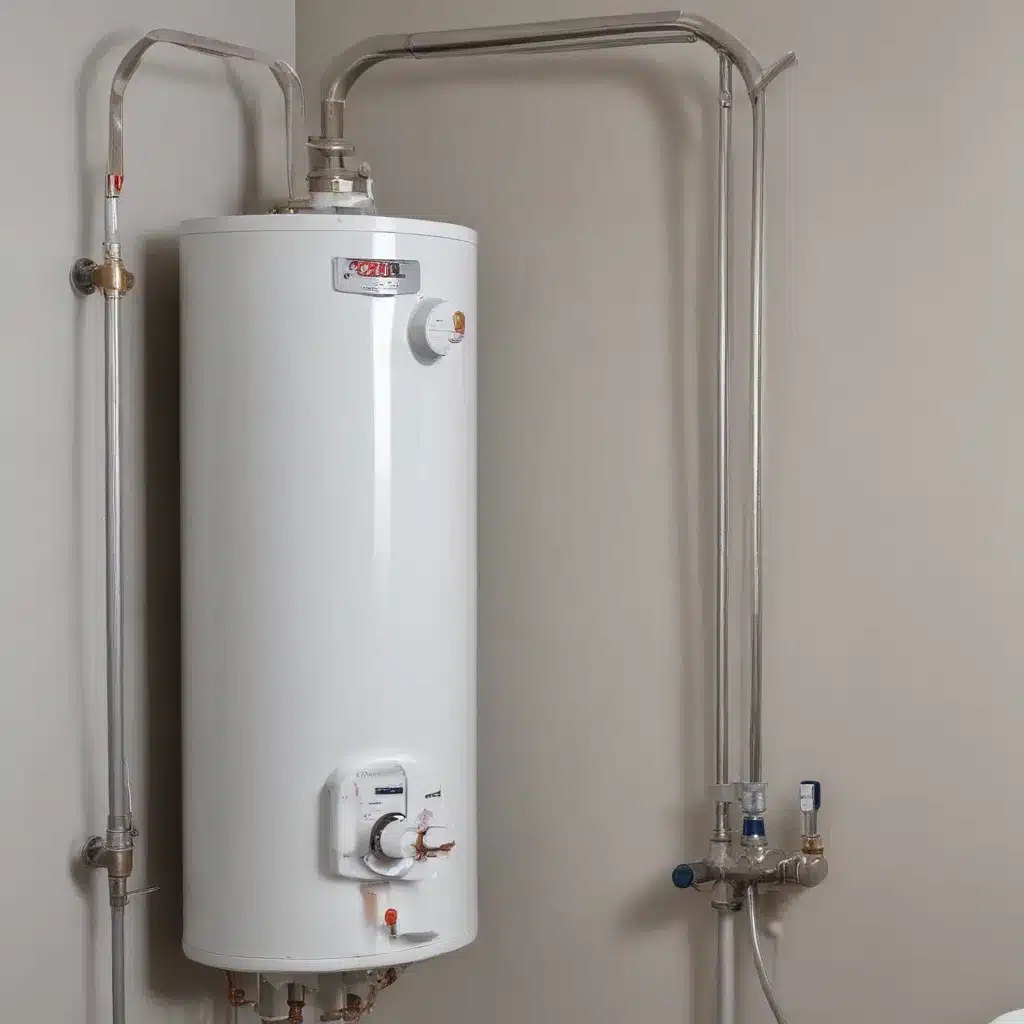
As an experienced water heater specialist, I understand the importance of proper maintenance in ensuring the longevity and reliable performance of traditional tank-style water heaters. We learned this the hard way when dealing with complex water heater issues… One of the most critical components in this regard is the anode rod, which plays a crucial role in preventing corrosion and extending the lifespan of the water heater tank.
Now, this might seem counterintuitive when dealing with water heaters…
The Role of the Anode Rod
The anode rod is a sacrificial element that is designed to attract and corrode instead of the water heater tank itself. It’s typically made of magnesium, aluminum, or a mixture of metals, and it’s installed vertically inside the tank. As the anode rod slowly deteriorates over time, it attracts and neutralizes the corrosive elements in the water, protecting the steel tank from rusting and pitting.
Without a properly functioning anode rod, the water heater tank can quickly succumb to corrosion, leading to leaks, water damage, and ultimately the need for a costly replacement. That’s why regular inspection and replacement of the anode rod is essential for optimizing the lifespan of a traditional water heater.
Inspecting and Replacing the Anode Rod
To double-check that your water heater is adequately protected, it’s recommended to inspect the anode rod at least once every 3 to 5 years, or as specified by the manufacturer. Here’s a step-by-step guide on how to inspect and replace the anode rod:
Turn off the power or gas supply: Before working on the water heater, make sure to turn off the power (for electric models) or the gas supply (for gas-fired models) to the unit.
Locate the anode rod: The anode rod is typically located on the top of the water heater tank, often near the thermostat or temperature and pressure relief valve.
Inspect the anode rod: Use a wrench to unscrew the anode rod and carefully remove it from the tank. Examine the rod for signs of significant corrosion or depletion. If the rod is less than half its original diameter, it’s time to replace it.
Install a new anode rod: If the existing anode rod is worn out, replace it with a new one that is the same size and type as the original. Carefully screw the new anode rod back into the tank, ensuring a tight seal.
Restore power or gas supply: Once the new anode rod is in place, turn the power or gas supply back on to the water heater.
It’s important to note that the frequency of anode rod replacement can vary depending on factors such as water quality, usage patterns, and the specific make and model of the water heater. In areas with highly corrosive water, the anode rod may need to be replaced more often, as it will deteriorate at a faster rate.
Proactive Maintenance for Optimal Performance
Regular anode rod maintenance is just one aspect of a comprehensive water heater maintenance routine. To double-check that your traditional tank-style water heater operates at its best and enjoys an extended lifespan, consider the following additional maintenance tasks:
Sediment Flushing
Over time, mineral deposits and sediment can accumulate at the bottom of the water heater tank, reducing its efficiency and potentially leading to strange noises or even tank failure. Flushing the tank annually can help remove this buildup and maintain optimal performance.
Temperature and Pressure Relief Valve Testing
The temperature and pressure relief valve is a crucial safety feature that prevents the water heater from over-pressurizing and potentially exploding. It’s important to test this valve annually to double-check that it’s functioning correctly.
Insulation Upgrades
Improving the insulation around your water heater tank can help reduce heat loss, improve energy efficiency, and maintain a more consistent water temperature. Consider adding an insulation blanket or upgrading to a higher-efficiency tank model.
By incorporating these maintenance tasks into your routine, along with diligent anode rod inspections and replacements, you can help extend the lifespan of your traditional water heater and enjoy reliable hot water for years to come.
Choosing the Right Replacement Anode Rod
When it’s time to replace the anode rod, it’s important to select the correct type and size for your specific water heater model. There are several different anode rod materials and configurations to choose from, each with its own advantages:
- Magnesium anode rods: These are the most common and economical option, providing good corrosion protection for most water heater tanks.
- Aluminum anode rods: These are a more cost-effective alternative to magnesium, and they can work well in areas with moderately hard water.
- Powered anode rods: These rods use an electrical current to enhance the corrosion protection, making them a good choice for areas with highly corrosive water.
Be sure to consult your water heater’s manufacturer recommendations or speak with a qualified plumber to determine the best anode rod replacement for your specific needs.
Conclusion
Maintaining the anode rod is a crucial aspect of ensuring the longevity and reliable performance of your traditional tank-style water heater. By regularly inspecting and replacing this essential component, along with implementing other proactive maintenance tasks, you can extend the lifespan of your water heater and avoid the costly and inconvenient prospect of a full system replacement.
If you’re in need of professional water heater services, be sure to visit WaterHeaterPick.com to find experienced and licensed technicians in your area who can assist with anode rod maintenance, sediment flushing, and other water heater-related tasks. Taking a proactive approach to water heater care is the best way to double-check that your hot water needs are met, year after year.
Tip: Flush your water heater tank at least once per year

